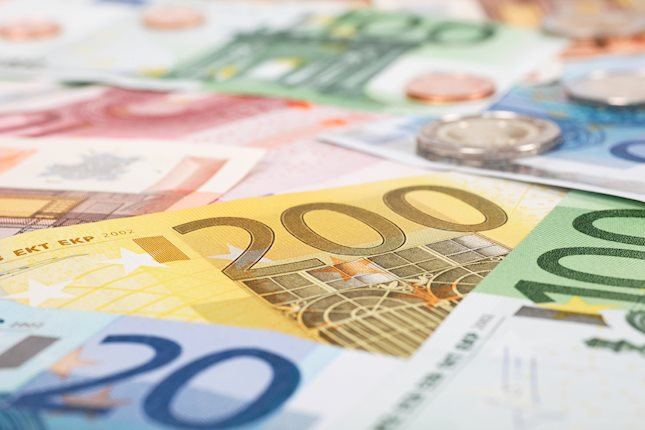Markets
US CPI and the March Fed meeting minutes were the main events defining trading yesterday. The former showed headline prices easing a full percentage point to an annual 5% but a core gauge accelerating from 5.5% to 5.6% on the bank of sticky services/housing inflation. US bond yields whipsawed with the 2-y losing 20 bps from intraday highs, followed by a 15 bps rebound in the hours thereafter. The 10-y fell but then recouped all of the 12 bps drop. The minutes later revealed the Fed balancing risks of a credit crunch following the SVB collapse and stubbornly high inflation. They raised rates by 25 bps and the updated dot plot suggested one more in store even as Fed staff warned for a mild recession. But that’s less than what officials expected to do before the financial turmoil erupted, according to the minutes. Given the uncertain outlook, there’s a need for “flexibility and optionality”. The sky in the meantime cleared up a bit, something which several Fed governors including Daly yesterday, acknowledged. Yet, the overall dovish tone of the minutes in the end still prevented the 2-y yield (-6.4 bps) a close above 4%. Longer maturities underperformed with the 10-y eventually losing 3.5 bps and the 30-y adding 0.4 bps. The US induced decline in German Bund yields was quickly followed by a vigorous rebound, leading to net gains of 5.6 bps (30-y) to 9 bps (2-y). Strong Bund underperformance brought EUR/USD within striking distance of the 1.10 big figure. Dollar weakness also did its part. The trade-weighted index fell from 102.12 to 101.50. EUR/GBP managed to close above 0.88 for the first time since end-March. BoE governor Bailey in an after-market speech said that financial stability issues won’t distract the central bank from its fight against inflation through higher rates, adding that it has different tools to address the matter. Equities struggled. The Euro Stoxx 50 erased a 1.5% gain to trade flat, Wall Street ended a choppy session in the red (Nasdaq -0.85%).
The Australian dollar is the top performer during Asian trading this morning on the back of a stronger-than-expected labour market report. The USD trades stable with EUR/USD hovering near yesterday’s closing levels close to but below 1.10. US cash yields eke out gains of up to 2.5 bps at the front. The 2-y yield remains close near the 4% barrier. Today’s economic calendar contains jobless claims and US PPI numbers. Seeing the market’s over-sensitiveness for downside surprises, core bond yields face larger risks for losing further ground, especially in the US. The dollar in such a case may break through support at around EUR/USD 1.10(33). Doing so immediately brings 1.1185/86 on the radar. The UK industrial update this morning slightly disappoints but sterling in a first reaction trades little changed.
News and Views
The Bank of Canada kept its policy rate as expected unchanged at 4.5% for a second meeting running. Quantitative tightening continues to complement the restrictive policy stance. It also sticks with a tightening bias if needed to return inflation to the 2% target. Canadian money markets discount a flat policy rate path until December, when they discount a 25 bps rate cut. BoC governor Macklem pushed back against that scenario at the press conference. The BoC expects CPI inflation (5.2% Y/Y in February) to quickly fall to around 3% mid 2023 and then decline more gradually to target by end 2024. Risks are tilted to the upside because inflation expectations are coming down slowly, service price inflation and wage growth remain elevated, and corporate pricing behavior has yet to normalize. Canadian demand is still exceeding supply and the labour market remains tight. Canadian Q1 growth looks to be stronger than anticipated in January with solid consumption and a bounce in exports. The former could take a hit as households renew mortgages at higher rates and as restrictive policy works its way through the economy more broadly. The latter might come under pressure in coming months as US growth is expected to slow considerably. The BoC projects GDP to grow by 1.4% this year (from 1%), 1.3% in 2024 (from 1.8%) and 2.5% in 2025.
March Australian labour data printed very strong this morning. Recall that February jobs data also delivered a big positive surprise (+63.6k). Employment grew by 53k (vs 20k expected) with full time job gains even bigger at 72.2k. Part time jobs fell by 19.2k. The unemployment rate stabilized at a near 50-yr low of 3.5% (vs 3.6% expected) with the participation rate unchanged at 66.7% as well. Australian money markets aren’t convinced yet that back-to-back payroll strength will tempt the RBA into delivering a (final?) 25 bps rate hike at the May policy meeting. The Aussie dollar trades slightly strong this morning against a weak USD (AUD/USD 0.67).
This non-exhaustive information is based on short-term forecasts for expected developments on the financial markets. KBC Bank cannot guarantee that these forecasts will materialize and cannot be held liable in any way for direct or consequential loss arising from any use of this document or its content. The document is not intended as personalized investment advice and does not constitute a recommendation to buy, sell or hold investments described herein. Although information has been obtained from and is based upon sources KBC believes to be reliable, KBC does not guarantee the accuracy of this information, which may be incomplete or condensed. All opinions and estimates constitute a KBC judgment as of the data of the report and are subject to change without notice.
Recommended Content
Editors’ Picks

EUR/USD stays below 1.0550 after soft German inflation data
EUR/USD trades in negative territory slightly below 1.0550 on Thursday. Soft inflation data from Germany makes it difficult for the Euro to gather strength, causing the pair to stretch lower. US markets will remain closed in observance of the Thanksgiving Day holiday.

GBP/USD trades below 1.2700 on modest USD recovery
GBP/USD stays under modest bearish pressure and fluctuates below 1.2700 on Thursday. The US Dollar corrects higher following Wednesday's sharp decline, not allowing the pair to gain traction. The market action is likely to remain subdued in the American session.

Gold maintains shallow recovery on Fed rate-cut bets
Gold extends its shallow recovery from Tuesday’s lows as it trades in the $2,640s on Thursday. The yellow metal is seeing gains on the back of cementing market bets that the Fed will go ahead and cut US interest rates at its December meeting.

Fantom bulls eye yearly high as BTC rebounds
Fantom (FTM) continued its rally and rallied 8% until Thursday, trading above $1.09 after 43% gains in the previous week. Like FTM, most altcoins have continued the rally as Bitcoin (BTC) recovers from its recent pullback this week.

Eurozone PMI sounds the alarm about growth once more
The composite PMI dropped from 50 to 48.1, once more stressing growth concerns for the eurozone. Hard data has actually come in better than expected recently – so ahead of the December meeting, the ECB has to figure out whether this is the PMI crying wolf or whether it should take this signal seriously. We think it’s the latter.

Best Forex Brokers with Low Spreads
VERIFIED Low spreads are crucial for reducing trading costs. Explore top Forex brokers offering competitive spreads and high leverage. Compare options for EUR/USD, GBP/USD, USD/JPY, and Gold.